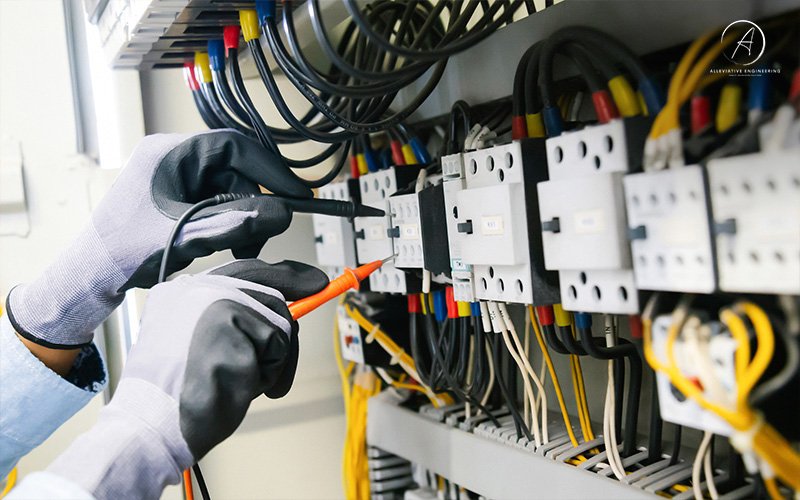
Essential Guide To Professional Electrical Installation
Ensuring a safe and efficient electrical installation is crucial for every homeowner. Properly installing electrical systems not only provides comfort but also guarantees safety for you and your loved ones. Careful planning, adherence to electrical codes, and the use of quality materials are key to a successful electrical installation. By understanding the importance of professional expertise and attention to detail, you can create a reliable electrical system that meets your needs and enhances your living space. Choosing the right professionals for your electrical project will ensure peace of mind and a job well done.
Everything You Need to Know About Electrical Installation
Introduction to Electrical Installation
Welcome to our comprehensive guide on electrical installation! Whether you are a homeowner looking to upgrade your electrical system or a budding electrician learning the ropes, understanding the basics of electrical installation is crucial. In this article, we will delve into the world of electrical installation, covering everything from safety tips to common tools used in the process.
What is Electrical Installation?
Electrical installation refers to the process of setting up electrical systems in buildings, homes, or other structures. It involves connecting wires, circuits, outlets, and other components to ensure a safe and reliable flow of electricity. Proper electrical installation is essential to ensure that all electrical devices work efficiently and safely.
The Importance of Proper Electrical Installation
Ensuring that electrical installations are done correctly is vital for several reasons. First and foremost, improper electrical installation can pose significant safety hazards, such as electrical shocks, fires, and even electrocution. Additionally, poorly installed electrical systems can lead to frequent power outages, damaged appliances, and increased energy costs.
Components of Electrical Installation
1. Wiring
Wiring is a critical component of electrical installation. It involves connecting electrical cables to various components, such as outlets, switches, and lighting fixtures. Proper wiring ensures that electricity flows smoothly and safely throughout the building.
2. Circuit Breakers
Circuit breakers are essential safety devices that protect electrical circuits from overloading and short circuits. They automatically shut off the flow of electricity when a fault is detected, preventing potential hazards such as fires and electrical damage.
3. Outlets and Switches
Outlets and switches are where electrical devices are connected to the electrical system. They provide the interface for plugging in appliances, turning on lights, and controlling electrical devices within a building.
Tools Needed for Electrical Installation
1. Wire Strippers
Wire strippers are used to remove the insulation from electrical wires, allowing for proper connections to be made. They come in various sizes to accommodate different wire gauges.
2. Screwdrivers
Screwdrivers are essential for connecting wires to outlets, switches, and other components. They come in different types, such as flathead and Phillips head, to fit various screw types.
3. Voltage Tester
A voltage tester is used to check if wires are live before working on them. It helps ensure that there is no electricity running through the wires, preventing the risk of electric shock.
Safety Tips for Electrical Installation
1. Turn Off Power
Before starting any electrical installation work, always turn off the power to the area where you will be working. This helps prevent accidents and ensures your safety.
2. Use Proper Insulation
Make sure to use proper insulation materials when working with electrical wires. Insulation helps prevent electrical shocks and ensures that wires are protected from damage.
3. Avoid Water
Water and electricity do not mix. Avoid working on electrical installations in wet or damp conditions to prevent the risk of electric shock.
4. Seek Professional Help When Needed
If you are unsure about any aspect of electrical installation or if the project is complex, do not hesitate to seek help from a qualified electrician. Safety should always be the top priority when working with electricity.
In conclusion, understanding the basics of electrical installation is crucial for ensuring the safety and efficiency of your electrical systems. By following proper procedures, using the right tools, and prioritizing safety, you can successfully complete electrical installation projects with confidence. Remember, when in doubt, always consult a professional to avoid any potential hazards.
The Easy Way to Master Three Way Switches in No Time
Frequently Asked Questions
What safety measures should be considered during an electrical installation?
Safety is paramount during electrical installations. Ensure that all power sources are turned off before working on the wiring. Use proper protective gear like gloves and goggles. Make sure the area is dry and well-lit to prevent accidents. It’s also important to follow local building codes and regulations to ensure a safe installation.
What are the key steps involved in installing electrical wiring in a new construction project?
The first step is to plan the layout of the electrical system, considering the placement of outlets, switches, and fixtures. Then, the wiring can be installed following the planned layout. This includes running cables through walls, connecting wires at junction boxes, and securing everything properly. After the wiring is installed, outlets and switches can be connected, and the system can be tested for safety and functionality.
How can I troubleshoot common issues in an electrical installation?
If you encounter issues like flickering lights, tripped circuit breakers, or outlets not working, start by checking for loose connections or damaged wires. Ensure that all connections are secure and wires are properly insulated. Test the voltage at various points in the circuit to identify any potential problems. If the issue persists, it’s advisable to consult a professional electrician for further diagnosis and repair.
Final Thoughts
In conclusion, a well-planned electrical installation is crucial for ensuring safety and efficiency in any building. Proper wiring and equipment selection play a significant role in preventing hazards and malfunctions. Regular maintenance and inspections are necessary to keep the electrical system in optimal condition. Remember, investing in quality materials and professional installation services will save you time and money in the long run. Prioritize the quality of your electrical installation to enjoy a reliable and safe electrical system for years to come.



